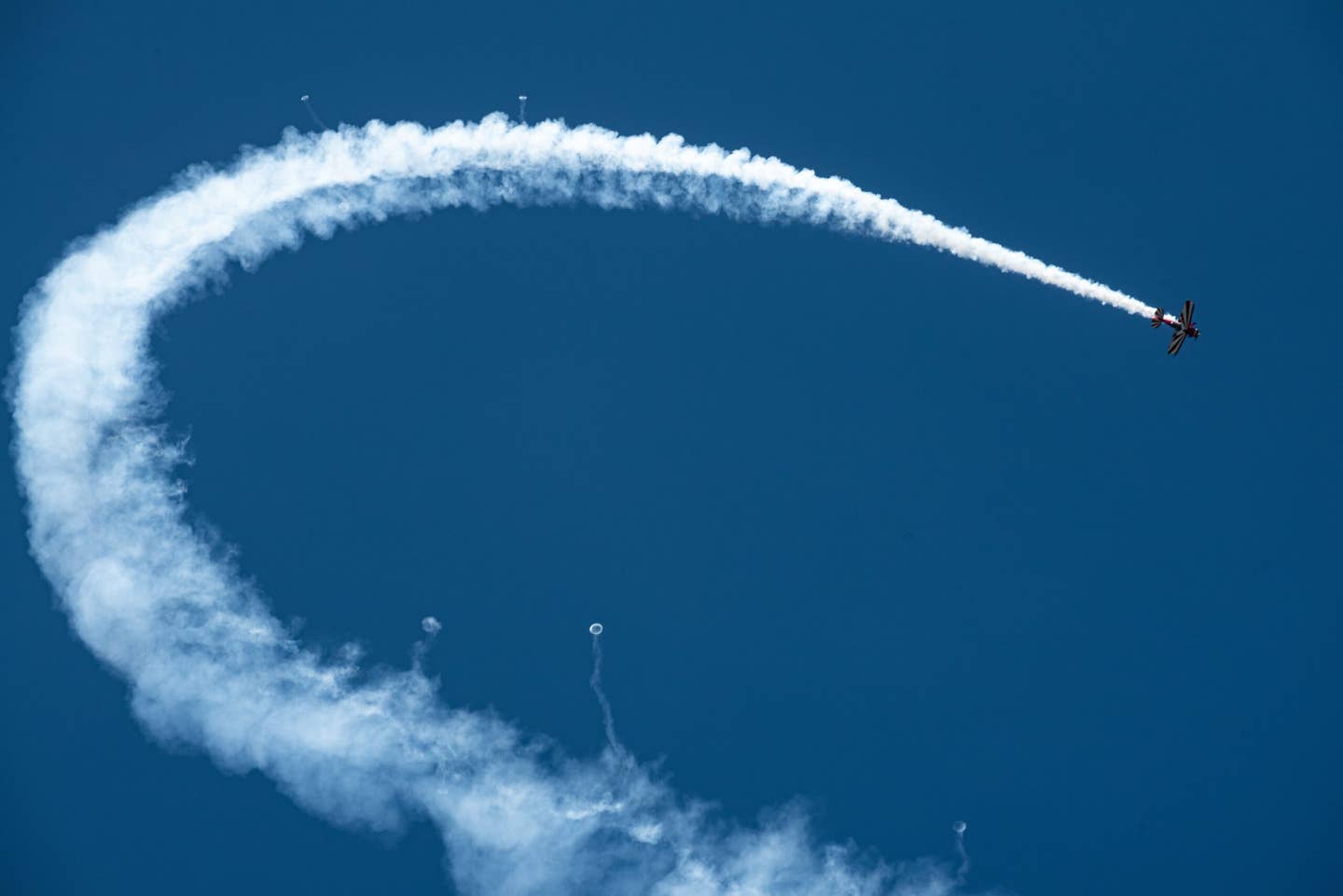What Is the Difference Between a Fly-In and an Airshow?
There are some subtle and not-so-subtle differences between the two.

An airshow involves aerial acts and typically takes about a year to plan. [Shutterstock]
Question: My community held a fly-in airport day last year in April, and this year, we were told we aren't going to have it again because the county is planning an airshow for August. Aren't they basically the same thing?
Answer: Not at all. An airshow involves aerial acts that require an aerobatics box, oft-paid performers and announcers, the designation of a show line (to keep the viewing public out of harm's way from performers), along with procedures and staff for emergencies, just to mention a few things. The FAA needs to approve the event, and a NOTAM is issued. Airshows usually charge a fee for entry.
The airport sponsor needs to approve the airshow before it happens, along with the FAA, which has guidance here.
An airshow usually takes about a year to plan. For example, the airshow in Grant County, Washington, is held on Father's Day weekend, and by August 1, they have started planning for the next year.
Fly-ins do not typically have paid performers, although they may have fly-bys of aircraft in the pattern, or Young Eagles rides taking place. Fly-ins require permission from the airport sponsor, such as the county, city, or port, making arrangements not to disrupt regular activities at the airport—like flight school operations. Usually, you do not need FAA permission—or have to issue a NOTAM about the fly-in.
A fly-in is more like a car show with aircraft on static display—and often the two are paired, classic cars and classic airplanes. Usually there isn't a fee to enter the fly-in, although they are often cast as fundraisers for aviation or civic organizations and donations are appreciated. Many aviation fly-ins have a pancake breakfast for a price, and that money is considered a donation.
Both an airshow and fly-in require the organization putting on the event to obtain an appropriate level of insurance, often determined by the airport sponsor. Sometimes, this can be the killer of the event, as the amount of insurance required by the airport sponsor risk management team is beyond the capability of the organization that wants to put on the event. This is particularly true if the fly-in is a fundraiser for a non-profit. Both events also require attention to infrastructure, such as getting an adequate number of porta-potties, parking assistance, first aid stations, etc.
In both cases, approaching the airport sponsor well in advance (at least a year to six months out) with a plan on when the event will take place, what activities and exhibits to be at the event, how many staff and volunteers you will have working the event, the footprint of the event on the airport, how you will address the issue of not interrupting regular airport operations, and how many people you anticipate having will go a long way to making your event a success.

Sign-up for newsletters & special offers!
Get the latest FLYING stories & special offers delivered directly to your inbox






